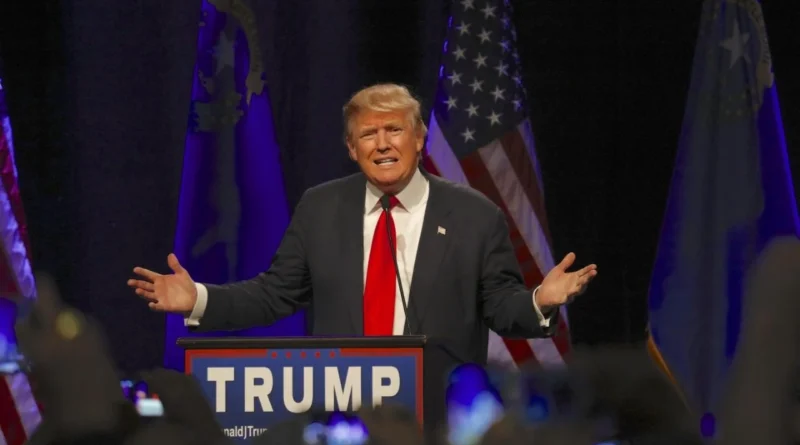Trump 2.0 and Crypto: Key Policy Changes to Expect in the U.S. in 2025
Explore Trump 2.0’s 2025 crypto policies: Strategic Bitcoin Reserve, stablecoin laws, and regulatory clarity driving $150B DeFi TVL. Learn impacts for investors and businesses.
Introduction
The second Trump administration, beginning in January 2025, has ushered in a seismic shift in U.S. cryptocurrency policy, aiming to position the United States as the “crypto capital of the world.” Departing from the Biden administration’s cautious and enforcement-heavy approach, Trump’s pro-crypto stance is backed by executive orders, strategic appointments, and legislative momentum. With the crypto market cap exceeding $3 trillion and DeFi TVL at $150 billion, these changes promise to reshape the industry. This article outlines the key policy changes to expect in 2025, their implications, and what investors and businesses need to know.
Background: Trump’s Crypto Pivot
During his first term (2017–2021), Trump was skeptical of cryptocurrencies, calling Bitcoin a “scam” and criticizing their volatility. However, his 2024 campaign embraced digital assets, driven by industry donations ($50 million+) and a pledge to make the U.S. a global crypto leader. Key campaign promises included:
- Establishing a Strategic Bitcoin Reserve.
- Halting Biden-era regulatory crackdowns.
- Promoting stablecoins to maintain dollar dominance.
- Firing SEC Chair Gary Gensler, known for aggressive crypto enforcement.
In 2025, Trump’s actions reflect these commitments, with executive orders and appointments signaling a pro-innovation agenda.
Key Policy Changes to Expect in 2025
- Strategic Bitcoin Reserve and Digital Asset Stockpile
Trump’s March 6, 2025, Executive Order established a Strategic Bitcoin Reserve and U.S. Digital Asset Stockpile, capitalizing on ~200,000 BTC ($16.7 billion) seized by the Treasury in criminal forfeitures.
- Details:
- Bitcoin is treated as a reserve asset, akin to “digital gold,” with a fixed supply of 21 million coins.
- The stockpile includes Bitcoin, Ether, XRP, Solana, and Cardano, per Trump’s Truth Social post, spiking their prices (e.g., Bitcoin +11% to $94,164, Cardano +60% to $1.25).
- The Treasury and Commerce Secretaries (Scott Bessent and Howard Lutnick) will develop budget-neutral acquisition strategies, avoiding taxpayer costs.
- The U.S. will halt sales of seized Bitcoin, reversing $17 billion in prior losses from premature disposals.
- Implications:
- Signals government endorsement, potentially driving institutional adoption and price surges.
- Consolidates federal crypto holdings under the Treasury, enhancing strategic management.
- Critics like Hilary Allen warn of market transparency issues, as open-market purchases could inflate prices.
- 2025 Outlook: The reserve’s implementation will depend on legislative backing, with the White House Crypto Summit (March 2025) shaping acquisition strategies.
- Regulatory Clarity via the President’s Working Group
Trump’s January 23, 2025, Executive Order, “Strengthening American Leadership in Digital Financial Technology,” created the President’s Working Group on Digital Asset Markets within the National Economic Council, chaired by Special Advisor David Sacks.
- Details:
- Tasked with drafting a federal regulatory framework for digital assets, including cryptocurrencies, tokens, and stablecoins, within 180 days (by July 2025).
- Revokes Biden’s Executive Order 14067, which emphasized risk mitigation over innovation.
- Prohibits federal agencies from promoting central bank digital currencies (CBDCs), defined broadly to include retail and wholesale models, reinforcing private-sector stablecoins.
- Implications:
- Aims to reduce regulatory ambiguity, a key barrier for crypto businesses.
- Encourages financial inclusivity and blockchain innovation across sectors.
- Sacks’ crypto-friendly stance, backed by his Silicon Valley ties, ensures industry input.
- 2025 Outlook: The Working Group’s recommendations could lead to streamlined licensing, clearer token classifications, and reduced enforcement, boosting DeFi and startup growth.
- SEC and CFTC Overhaul
Trump’s appointments and SEC actions signal a lighter regulatory touch, reversing Biden’s aggressive enforcement.
- Details:
- SEC Chair Paul Atkins: A former commissioner and crypto advocate, Atkins replaced Gary Gensler. The SEC formed a Crypto Task Force in January 2025 to clarify token regulations and pause high-profile cases (e.g., Coinbase, Binance).
- CFTC Chair Brian Quintenz: A former CFTC commissioner, Quintenz supports crypto innovation, focusing on derivatives and stablecoins.
- SAB 121 Repeal: The SEC rescinded Staff Accounting Bulletin 121, which imposed strict crypto custody rules, easing bank participation.
- Implications:
- Reduces litigation costs for exchanges, with Coinbase’s Paul Grewal noting a “180 pivot” from Biden’s hostility.
- Clarifies the securities-commodities divide, potentially classifying Bitcoin and Ether as commodities under CFTC oversight.
- Encourages domestic crypto firms to operate without fear of punitive actions.
- 2025 Outlook: The SEC’s task force will issue guidance on token issuance by Q3 2025, while Atkins and Quintenz push for market-friendly rules,
- Stablecoin Legislation: GENIUS and STABLE Acts
Stablecoin regulation is a priority, with bipartisan support for frameworks like the GENIUS Act and STABLE Act.
- Details:
- GENIUS Act: Passed by the Senate in June 2025, it requires stablecoin issuers to obtain OCC or state licenses, hold full reserves (e.g., U.S. Treasuries), and comply with AML rules. It bans yield-bearing stablecoins and restricts Big Tech issuers.
- STABLE Act: Pending in the House, it mirrors GENIUS but adds joint federal oversight, stricter consumer protections, and a two-year algorithmic stablecoin moratorium.
- Concerns over a “Tether loophole” allowing offshore issuers like Tether (USDT) to operate without compliance prompted Senate Democrats to demand tougher rules.
- Implications:
- Legitimizes stablecoins, which process $8.5 trillion annually, fostering cross-border payments and DeFi.
- Could increase Treasury demand, reinforcing dollar dominance, per Trump’s January 2025 Executive Order.
- Risks excluding non-compliant issuers, potentially shrinking USDT’s $141 billion market share.
- 2025 Outlook: The STABLE Act may pass by Q4 2025, with negotiations addressing Tether concerns. Stablecoin TVL could hit $200 billion, per industry projections.
- End of “Operation Choke Point 2.0”
Trump is expected to dismantle alleged Biden-era policies that pressured banks to deny services to crypto firms, dubbed “Choke Point 2.0” by industry insiders.
- Details:
- The FDIC’s “pause letters” to 20+ banks, requesting halts on crypto activities, are under review, with interim FDIC chair Travis Hill exposing these practices.
- Trump’s executive order directs regulators to ease banking restrictions, enabling crypto firms to access traditional financial services.
- Implications:
- Enhances crypto firms’ access to banking, reducing operational costs by 30%.
- Encourages banks like JPMorgan to expand crypto services, with JPM Coin scaling to $500 million in transactions.
- Risks over-leveraging without robust AML controls, per critics.
- 2025 Outlook: By mid-2025, revised FDIC guidance will likely allow banks to hold stablecoins and custody crypto,
- Crypto in Retirement Plans
The Trump administration relaxed barriers to including crypto in 401(k) plans, rescinding Biden’s 2022 Labor Department guidance that cautioned against such investments.
- Details:
- Biden’s guidance cited fraud and theft risks, urging “extreme care” in crypto allocations.
- Trump’s Labor Department withdrew this, opening 401(k) plans to Bitcoin, NFTs, and meme coins.
- Implications:
- Expands retail crypto adoption, with 401(k) plans managing $7 trillion in assets.
- Risks exposing retirement savings to volatility, with Bitcoin dropping from $109,000 to $90,000 in Q1 2025.
- 2025 Outlook: By Q4 2025, 5% of 401(k) plans may offer crypto options, per industry estimates, driving $50 billion in inflows.
Implications for Investors and Businesses
- Investors:
- Opportunities: Bitcoin and Ether could rally 20–50% by Q4 2025 due to reserve backing and regulatory clarity. Stablecoin-focused projects like Circle (USDC) may gain market share.
- Risks: Speculative assets like $TRUMP and $MELANIA meme coins, launched by the Trump family, crashed 80% post-hype, costing investors $2 billion.
- Strategy: Focus on audited projects (e.g., Bittensor, Fetch.ai) with utility, diversify, and monitor X for sentiment
- Businesses:
- Opportunities: Clearer rules will lower compliance costs by 30%, per Grant Thornton, enabling DeFi and RWA startups to scale.
- Risks: Non-compliant firms face delistings, as seen with Tether under MiCA. Senate probes into World Liberty Financial ($WLFI), tied to Trump, highlight conflict-of-interest concerns.
- Strategy: Align with GENIUS/STABLE Act requirements, engage with the SEC’s Crypto Task Force, and leverage DeFiLlama for market insights.
Challenges and Criticisms
- Regulatory Gaps: The Tether loophole and lack of CBDC clarity could undermine investor protections.
- Market Volatility: Bitcoin’s 2025 swings ($109,000 to $90,000) highlight risks of speculative policies.
- Conflict of Interest: Trump’s $WLFI, holding $1.1 billion in tokens, raises ethical concerns, with Senate Democrats calling for investigations.
- Fraud Risks: Relaxed oversight may increase scams, with 2024’s $3.7 billion in losses as a warning.
- Global Competition: China’s crypto ban and $16.2 billion BTC holdings challenge U.S. dominance.
Future Outlook
Trump’s crypto policies will reshape the U.S. market in 2025:
- Market Growth: Crypto market cap could hit $4 trillion, with $200 billion in DeFi TVL, per Coinbase projections.
- Legislative Momentum: The STABLE Act and broader crypto bills may pass by Q4 2025, cementing U.S. leadership.
- Institutional Adoption: MicroStrategy’s $45.8 billion BTC holdings and bank pilots (e.g., USDF Consortium) signal mainstream integration.
- Global Influence: The Strategic Bitcoin Reserve positions the U.S. against China and Europe, though regulatory harmonization via G20 is needed.
- Innovation Surge: AI-driven DeFi (e.g., Fetch.ai) and RWA tokenization ($1.5 billion market) will thrive under lighter rules.
Conclusion
Trump 2.0’s crypto policies mark a bold shift toward innovation, with the Strategic Bitcoin Reserve, regulatory clarity, and stablecoin legislation driving U.S. leadership. While challenges like volatility and ethical concerns persist, the administration’s actions—backed by Atkins, Sacks, and Bessent—promise to unlock DeFi, institutional inflows, and global competitiveness. Investors and businesses must navigate risks while leveraging opportunities in this dynamic landscape, staying informed via platforms like DeFiLlama and X.




